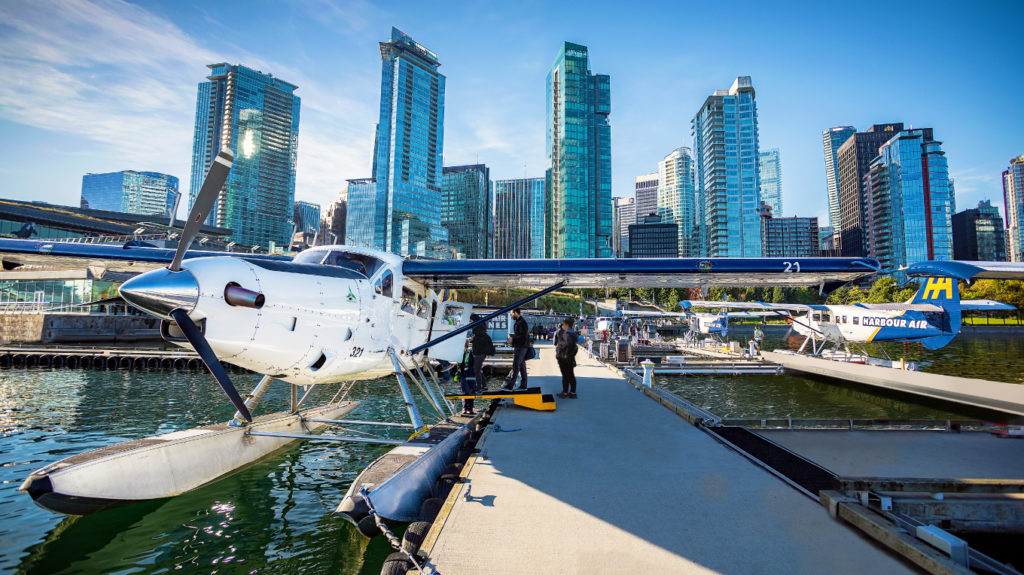Estimated reading time 7 minutes, seconds.
The Canadian Air Mobility Consortium (CAAM) has published a white paper examining the benefits and next steps to bringing advanced air mobility (AAM) and eVTOL aircraft to Vancouver.
The white paper, written by NEXA Advisors with assistance from Crown Consulting, was produced for the growing consortium of more than 60 industry, government, finance and academic organizations working with CAAM to build an ecosystem of drone and eVTOL applications in the greater Vancouver region and the rest of Canada.

“The vision for advanced air mobility will be to deliver equitable, inclusive, resilient, intermodal and accessible elements with zero-emission aircraft,” CAAM states in the white paper. “A centralized strategy is planned, nationally and regionally, with the inclusion of stakeholders across government, industry, academia and the investment community.”
Vancouver is one of about a dozen cities around the world actively planning to introduce eVTOLs in the coming years, alongside Seoul, Singapore, Tokyo, Los Angeles and others. A densely-populated city with significant congestion, residents that are accustomed to helicopters, 54 existing helipads, and local and provincial governments invested in promoting clean energy and transportation, many view Vancouver as one of the most promising early adopters of this technology.
In December 2019, Harbour Air, the largest operator of seaplanes in North America, successfully test-flew an electrified six passenger DHC-2 de Havilland Beaver powered by magniX’s magni500 propulsion system. Harbour Air plans to convert its entire fleet to electric propulsion — a plan bolstered by a provincial sales tax exemption recently passed by the British Columbia government for electric aircraft and related services.
At least one B.C.-based helicopter operator, Helijet, is studying the integration of eVTOLs into its fleet once they become available for purchase or lease.
Congestion is a major drag on Vancouver’s economy, as is the case for many other densely-populated cities, with few surface opportunities for improvement. If the region’s population grows from its current 2.5 million to 3.5 million by 2050, the cost of congestion is estimated to rise to $1 billion annually.
“Unlike many large cities, Vancouver has no freeways into or through the downtown area,” the white paper states. “Hemmed in by water and mountains, the area is almost completely built-out with few opportunities for new roads. Widening roads and freeway corridors and building more bridges is not only cost-prohibitive but flies in the face of Vancouver’s Transportation 2040 Plan,” which aims to de-emphasize cars and fossil fuels.
The paper estimates ground infrastructure costs for a network of vertiports in Vancouver to be $181 million, including adapting current landing pads and building 10-12 new facilities, plus an additional $78 million for new traffic management systems. Other options for new mobility infrastructure development — roads, light rail extensions, bridges and tunnels — are expected to cost significantly more.
A market study conducted by NEXA Advisors last year predicted eVTOLs will provide trips for 683,000 passengers per year in the Vancouver region by 2040 — enough to make a dent in the expected congestion.

“Advanced air mobility will not replace current transportation modes but will complement them, especially where expansion of the Skytrain, ferry line or bus service is simply not economical or feasible,” according to the white paper. “eVTOL aircraft stationed at the end of the SkyTrain lines may take commuters into further-out communities where housing is more affordable, opening up more areas for development and alleviating the real estate crunch closer to downtown.”
The paper clearly establishes an approach to eVTOLs focused on integration with existing forms of transit. With 449 kilometres (279 miles) of bike lanes and the number of people biking to work nearly doubling in the last five years to 12 percent, according to the paper, the ability to transport passengers’ bikes on eVTOLs — something not yet addressed by any manufacturers — could play a significant role in effective multi-modal integration in Vancouver.
CAAM’s white paper points to numerous applications of eVTOLs and drones in Vancouver besides personal transportation, including the significant advantages these aircraft are expected to have over helicopters for emergency air medical use. According to a 2018 study in Air Medical Journal, the average helicopter EMS flight takes 10-13 minutes to lift off. The white paper’s authors predict this time will be improved by eVTOLs that are able to start up more rapidly.
In the near future, CAAM is working to propose and test early applications of drones and eVTOLs in the region. One such use case identified is the transport of a radioisotope necessary for cancer treatment at B.C. Cancer-Victoria that is produced across the bay at B.C. Cancer-Vancouver.
With a half-life of only 110 minutes, rapid transportation is critical for improving patient outcomes. A Sikorsky S-76 operated by Helijet will deliver the isotope much faster than ground transit and ferry, but a high-speed eVTOL would improve both speed and cost. A triple-bottom-line analysis of this scenario — examining societal, economic and environmental impact — is underway by CAAM and expected to be released by the end of the year.
CAAM plans to continue conducting analyses of economic impact and public benefit to lay the groundwork for greater eVTOL and drone use in Vancouver and broader Canada.
The consortium also intends to circulate an annual “public interest survey” in partnership with a local university to track changes in public perception, as well as draft policy recommendations that promote sustainable and equitable integration of these technologies and develop incentives encouraging clean vehicle developers to establish a presence in the region.
This story was originally published on evtol.com, Skies’ sister publication.








